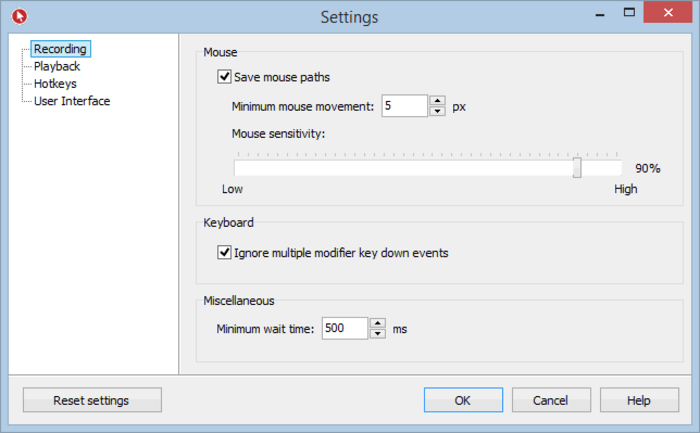
Additional fields such as product ID numbers, product prices, or product descriptions would, generally, also contain static data. If your spreadsheet contains static data such as the company name and location, you should enter that information in advance, before you write the macros, because this static information rarely, if ever, changes. You can then repair the error or record a new macro. The macro stops when it reaches the error.


Press F8 each time you want the macro to proceed to the next step.
#Record a keystroke macro windows 10 code
Shrink the Code window and place it on the bottom right side of the screen so you can see your spreadsheet behind it.

Click Developer > Macro, select your macro from the list, then click the Step Into button. It’s like slow motion, only you control each time the next event occurs using the F8 key. If a macro fails, you can troubleshoot it by stepping through it one line at a time. You’d use one macro to combine all the branch workbooks into one final spreadsheet, a second macro to calculate the data, a third macro to format the spreadsheet, a fourth macro to create charts, and perhaps a fifth macro to print. In the April Report example, you wouldn’t combine the calculation macro with the format macro. For example, if you code the macro to sum A1 through A20, then add more rows (e.g., A1 through A35), the formula will not include the additional cells and the sum total will be wrong. If you hardcode cell addresses, any changes or edits to the spreadsheet can invalidate the macro functions. Use the directional keys (End-Down, Ctrl+ Up, etc.) to position your cursor so you can add, change, or delete the data inside the spreadsheet as needed. (You can also create an additional macro to perform formatting tasks.) Then you can format the column widths, change fonts, add attributes, and place borders or boxes if you’d like. After the data is calculated, you can use Insert Rows to add column headers, spreadsheet titles, and other information.Don’t worry about a worksheet title, column headers, or formatting (such as column widths, fonts, etc.) at this point.If the other spreadsheets’ data contains formulas, choose Paste > Special > Values for your Paste options.Continue this process until the data in all workbooks are copied into your April Report spreadsheet. Open the second branch workbook and copy the entire spreadsheet’s data (minus the column headers) to cell A56 in your April Report spreadsheet.Open the first branch workbook and copy the entire spreadsheet’s data (minus the column headers) to cell A1 in your April Report spreadsheet.Do not move it to accommodate titles, field headers, or anything else. Your cursor is automatically located in the Home position (A1). Create a new workbook in Excel (e.g., April Report).For this exercise, I’ll just address the final spreadsheet with the combined data. You can write a macro to perform all of these functions, including opening and combining all the worksheets into one combined spreadsheet. Regardless of where your cursor is positioned when you begin recording the macro, even if it’s already located in cell A1, your first macro keystroke must be Ctrl+Home to make sure you start at Home.Įxample: Imagine that every month you receive dozens of spreadsheets from all your branch offices that you must first combine, then organize, and calculate to produce one monthly report. If you saved your macro in the Personal Macro Workbook (recommended), you can reuse this macro on other worksheets with similar data. Always begin at HomeĪlways begin in the Home position (cell A1)-with your cursor and your data. Record macros using relative cell addresses.

Enter your keystrokes, formulas, and so forth, then click the Stop Recording button and run your macro.Click the Relative Reference button next-it turns dark green to indicate that it’s active. The dialog box disappears, and the Record Macro button changes to a Stop Recording button.Choose Personal Macro Workbook from the Store Macro In drop-down list of choices, enter a description (if desired), and click OK. In the Record Macro dialog box, enter a macro name and Shortcut Key (if applicable).The default in Excel is Absolute, but you can change this to Relative on the Stop Recording toolbar:


 0 kommentar(er)
0 kommentar(er)
